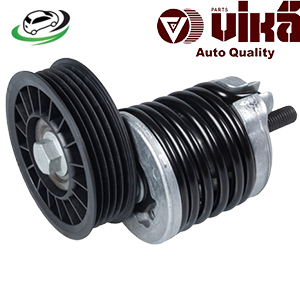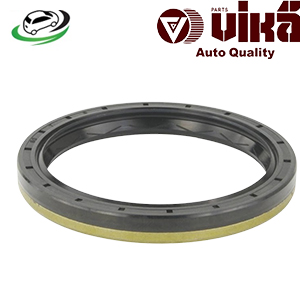-40%
Get Audi 8V S3/ A3 8P/ A3 8V/ TT MKI/ TT MKII/ TTS/ VW EOS/ Golf IV/ Golf R/V/VI/VII/ Jetta IV GLI Front Axle Flange Seal 02M301189G
The front axle flange seal is a critical component in the drivetrain of many vehicles, particularly those with four-wheel drive (4WD) or all-wheel drive (AWD) systems. This seal plays a vital role in preventing fluid leaks from the differential and ensuring that the axle components remain lubricated and free from contaminants. Understanding the functions, types, design, installation, and maintenance of front axle flange seals is essential for vehicle owners and automotive technicians alike.
2. Function of the Front Axle Flange Seal
The primary functions of the front axle flange seal include:
- Fluid Containment: The front axle flange seal prevents gear oil or differential fluid from leaking out of the axle housing. This is crucial for maintaining proper lubrication of the gears and bearings within the differential.
- Contaminant Prevention: The seal also acts as a barrier against dirt, moisture, and other contaminants that can enter the axle housing. Contaminants can cause premature wear and damage to the gears and bearings, leading to costly repairs.
- Pressure Regulation: In some designs, the front axle flange seal helps maintain appropriate pressure within the differential housing, allowing for optimal fluid flow and lubrication under various operating conditions.
- Enhanced Performance: By preventing fluid leaks and contamination, the front axle flange seal contributes to the overall performance and reliability of the vehicle’s drivetrain, ensuring smooth operation and longevity.
3. Types of Front Axle Flange Seals
There are several types of front axle flange seals, each designed for specific applications and conditions:
- Lip Seals: Lip seals are the most common type of axle flange seal. They consist of a flexible rubber lip that conforms to the surface of the axle shaft, creating a tight seal. Lip seals are effective at preventing leaks and are suitable for a wide range of applications.
- O-Ring Seals: O-ring seals are circular elastomeric seals that fit into a groove on the axle flange. They provide a reliable seal against fluid leakage but may not be as effective as lip seals in high-pressure applications.
- Mechanical Seals: Mechanical seals are more complex and consist of two mating surfaces that create a seal when pressed together. They are typically used in high-performance or high-temperature applications.
- Dynamic Seals: Dynamic seals are designed to accommodate movement between the axle and the flange. They can withstand the axial and radial movements of the axle during operation, making them suitable for applications with significant motion.
4. Design and Construction of Front Axle Flange Seals
The design and construction of front axle flange seals are crucial for their effectiveness. Key components include:
- Seal Body: The seal body is typically made from durable materials such as rubber, silicone, or polyurethane. These materials are chosen for their ability to withstand high temperatures, pressure, and chemical exposure.
- Seal Lip: The seal lip is the flexible portion of the seal that makes contact with the axle shaft. The lip is designed to create a tight fit and is often shaped to enhance sealing performance.
- Spring: Some seals include a spring that helps maintain pressure against the axle shaft, ensuring a tight seal even under varying conditions.
- Backup Ring: A backup ring may be used to prevent the seal from extruding under pressure, enhancing the seal’s longevity and effectiveness.
- Installation Features: Many front axle flange seals are designed with specific installation features, such as alignment grooves or markings, to facilitate proper installation and ensure correct positioning.
5. Importance of Front Axle Flange Seals
Front axle flange seals are essential for the overall performance and longevity of a vehicle’s drivetrain for several reasons:
- Preventing Fluid Leaks: Fluid leaks from the differential can lead to low fluid levels, resulting in inadequate lubrication of gears and bearings. This can cause overheating and eventual failure of these components.
- Minimizing Contamination: The seal prevents dirt, debris, and moisture from entering the axle housing, protecting the internal components from damage. Contaminated fluid can lead to accelerated wear and reduced performance.
- Enhancing Drivetrain Performance: By maintaining proper lubrication and preventing leaks, front axle flange seals contribute to smoother operation and improved efficiency of the drivetrain.
- Extending Component Life: A well-functioning front axle flange seal helps extend the life of the differential and associated components by preventing wear and damage caused by fluid loss or contamination.
- Safety Considerations: Fluid leaks can lead to hazardous driving conditions, such as reduced traction in 4WD or AWD systems. Ensuring the integrity of the front axle flange seal is crucial for maintaining vehicle safety.
6. Signs of a Failing Front Axle Flange Seal
Identifying a failing front axle flange seal early can prevent more significant issues down the line. Common signs of a failing seal include:
- Fluid Leaks: The most obvious sign of a failing front axle flange seal is visible fluid leakage around the axle housing. This may appear as puddles or wet spots on the ground beneath the vehicle.
- Low Fluid Levels: Regularly checking the differential fluid level may reveal that it is lower than normal, indicating a potential leak from the front axle flange seal.
- Unusual Noises: If the differential is not adequately lubricated due to a leak, it may produce whining, grinding, or clunking noises during operation, indicating potential damage.
- Poor Drivetrain Performance: A failing seal can lead to suboptimal performance in the vehicle’s drivetrain, including difficulty engaging 4WD or AWD systems and reduced traction.
- Contaminated Fluid: If differential fluid appears discolored or contains debris, it may indicate that contaminants have entered the housing due to a compromised seal.
7. Maintenance of Front Axle Flange Seals
Regular maintenance is essential to ensure the longevity and effectiveness of front axle flange seals. Key maintenance practices include:
- Regular Inspections: Periodically inspect the front axle flange seals for signs of wear, damage, or leaks. This can help catch potential issues before they escalate.
- Fluid Level Checks: Regularly check the differential fluid levels and top off as necessary. Low fluid levels can lead to inadequate lubrication and damage to the differential.
- Fluid Changes: Follow the manufacturer’s recommendations for differential fluid changes. Contaminated fluid can lead to seal failure and other drivetrain issues.
- Monitor for Noise: Pay attention to any unusual noises from the differential, as these may indicate potential seal or bearing issues.
- Professional Inspections: If any signs of seal failure are detected, seek professional inspection and diagnosis. A qualified mechanic can assess the condition of the front axle flange seal and recommend necessary repairs or replacements.
8. Replacing a Front Axle Flange Seal
Replacing a front axle flange seal is a relatively straightforward process for those with mechanical skills. Here are general steps for replacement:
- Gather Tools and Supplies: Before starting, gather necessary tools, including a socket set, torque wrench, seal puller, and a replacement seal. Ensure the vehicle is parked on a level surface.
- Lift the Vehicle: Safely lift and secure the vehicle using jack stands to gain access to the front axle.
- Remove the Wheel and Brake Components: Depending on the vehicle, you may need to remove the wheel and brake components to access the axle flange.
- Drain Differential Fluid: If necessary, drain the differential fluid to prevent spills during the replacement process.
- Remove the Old Seal: Use a seal puller or a similar tool to carefully remove the old front axle flange seal from the axle housing. Be cautious not to damage the housing during removal.
- Clean the Seal Area: Thoroughly clean the sealing surface to remove any debris, dirt, or old sealant that may hinder the installation of the new seal.
- Install the New Seal: Apply a thin layer of lubricant to the new seal lip to facilitate installation. Carefully press the new seal into place, ensuring it is properly seated in the axle housing.
- Reassemble Components: Reinstall any components that were removed, including the brake components and wheel. Ensure everything is tightened to the manufacturer’s specifications.
- Refill Differential Fluid: Refill the differential with the appropriate type and amount of fluid, following the manufacturer’s recommendations.
- Test Drive the Vehicle: After completing the installation, take the vehicle for a test drive to ensure proper operation and check for any leaks around the new seal.
9. Conclusion
The front axle flange seal is a crucial component in the vehicle’s drivetrain, serving to prevent fluid leaks and protect against contaminants. Its role in maintaining proper lubrication and ensuring optimal performance makes it an essential part of a vehicle’s functionality. Regular maintenance, timely inspections, and proactive replacement of worn seals can help ensure the longevity and reliability of the front axle system.
Understanding the design, function, and importance of front axle flange seals empowers vehicle owners and technicians to make informed decisions regarding maintenance and repairs. By prioritizing the integrity of these seals, vehicle owners can enhance the performance and safety of their vehicles, ensuring a smooth and reliable driving experience
Follow us on Facebook for more parts.






Reviews
Clear filtersThere are no reviews yet.